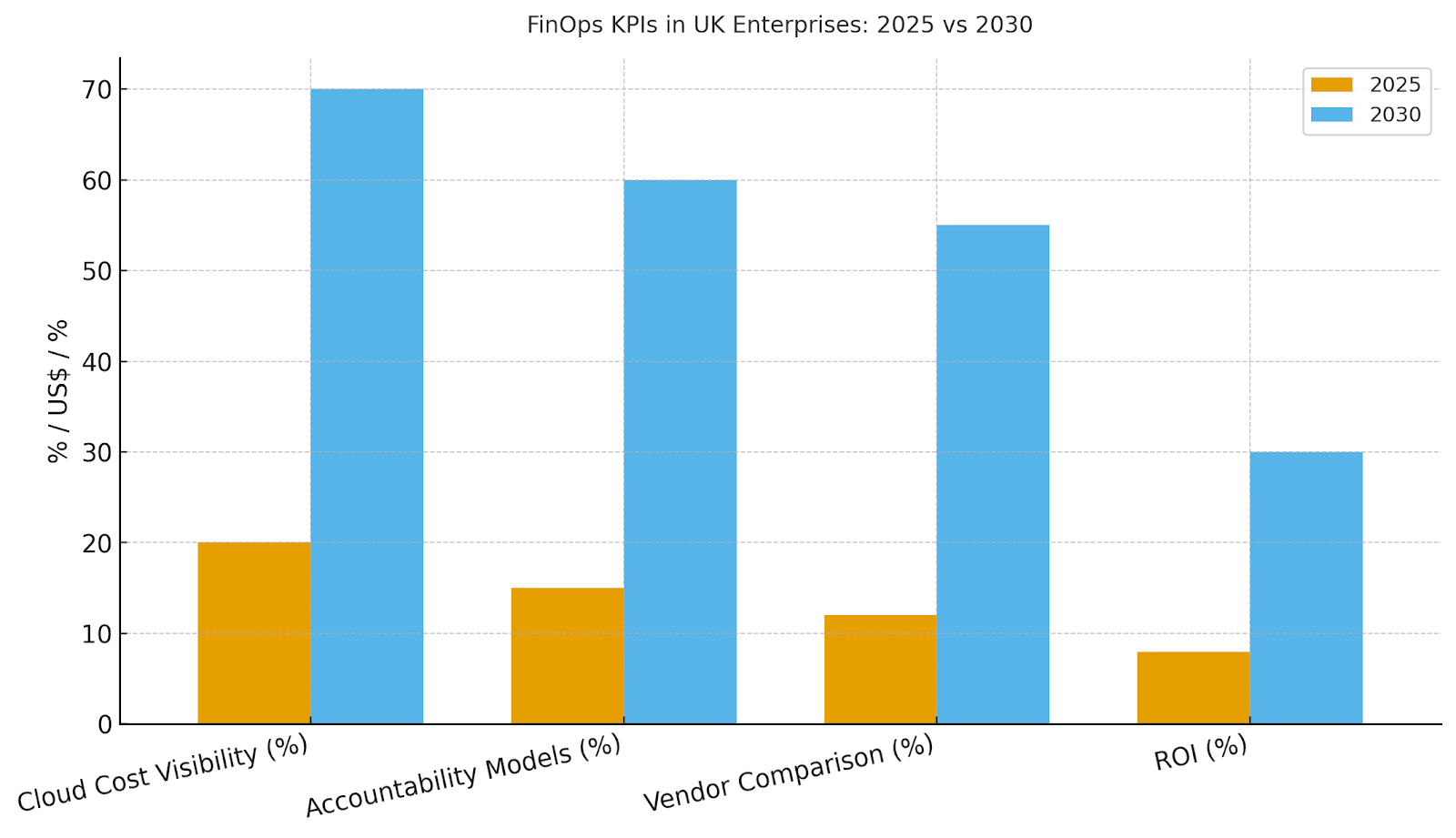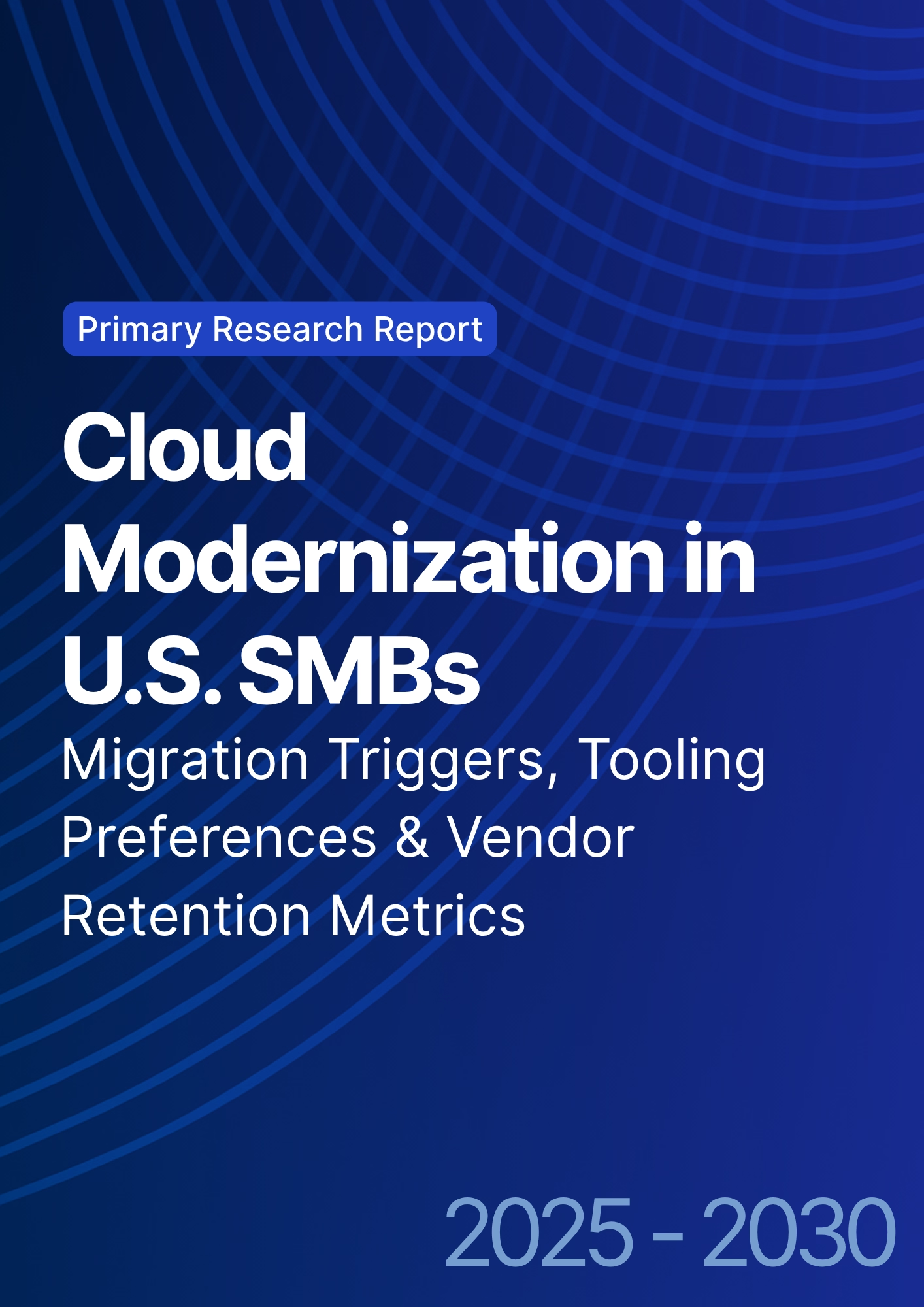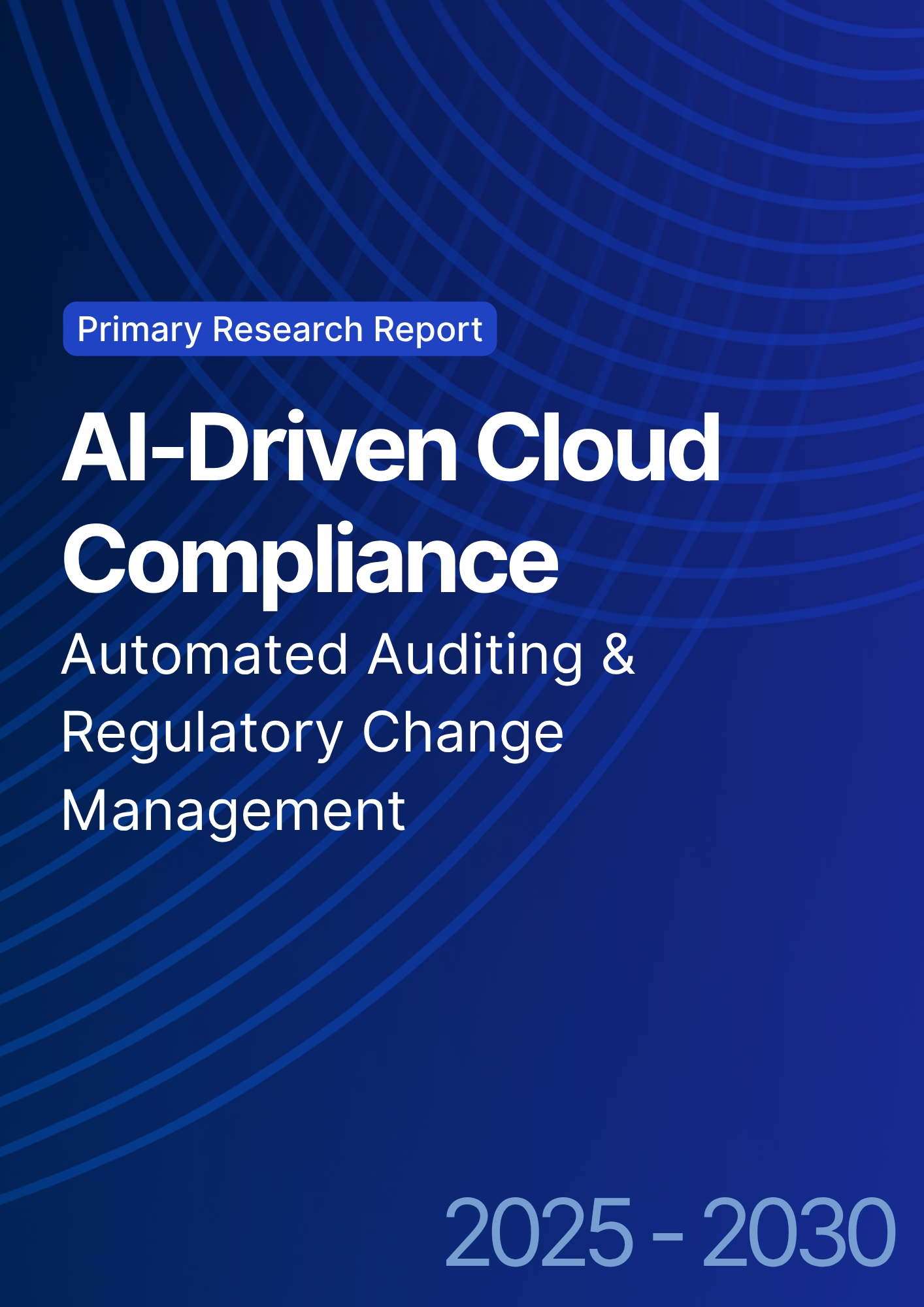

68 Circular Road, #02-01 049422, Singapore
Revenue Tower, Scbd, Jakarta 12190, Indonesia
4th Floor, Pinnacle Business Park, Andheri East, Mumbai, 400093
Cinnabar Hills, Embassy Golf Links Business Park, Bengaluru, Karnataka 560071
Connect With Us
FinOps Maturity in UK Enterprises: Cloud Cost Visibility, Accountability Models & Vendor Comparison (2025–2030)
FinOps maturity is accelerating across U.K. enterprises as firms prioritize cloud cost optimization, financial accountability, and real-time visibility. Spending is projected to grow from ~$1.5B in 2025 to ~$6.7B by 2030, with adoption increasing from 25% to 70%. Cloud cost visibility will rise from 20% to 70%, while accountability models expand from 15% to 60%. ROI is expected to improve from 8% to 30% as competitive vendor management and governance practices strengthen. With automation, cross-cloud tools, and standardization, FinOps will become central to financial efficiency and smarter cloud management in the U.K. by 2030.

What's Covered?
Report Summary
Key Takeaways
1. FinOps spend increases from ~US$1.5B to ~US$6.7B by 2030.
2. Adoption rates grow from ~25% to ~70%, enhancing financial governance.
3. Cloud cost visibility improves from ~20% to ~70%, reducing wastage.
4. Accountability models grow from ~15% to ~60%, optimizing cloud cost management.
5. Vendor comparison adoption rises from ~12% to ~55%, driving competitive pricing.
6. ROI improves from ~8% to ~30% by 2030 as enterprises optimize their cloud contracts.
7. Operational efficiency gains of ~40% as cloud costs are better managed.
8. Cross-cloud integration will play a key role in FinOps maturity by 2030.

a) Market Size & Share
FinOps spend in the U.K. is expected to grow from ~US$1.5B in 2025 to ~US$6.7B by 2030. The dual‑axis figure shows rising spending alongside increased adoption rates, which will reach ~70% by 2030. Share consolidates around cloud cost visibility, vendor comparison, and accountability frameworks. Risks include integration complexity, vendor lock-in, and regulatory compliance; mitigations include standardized financial frameworks and multi-cloud solutions.

b) Market Analysis
Adoption of FinOps frameworks in U.K. enterprises is expected to rise significantly by 2030, with cost visibility and vendor comparison growing as key priorities. The bar chart shows key KPI shifts, with cost reduction and ROI improvements leading the way. Enterprises will see significant gains in operational efficiency and cloud cost optimization.

c) Trends & Insights
1) FinOps is becoming essential for large enterprises to optimize cloud spend and ensure governance. 2) Cross-cloud solutions and multi-cloud strategies are increasingly important in managing complex cloud ecosystems. 3) The role of CFOs and finance teams in cloud optimization will grow, as FinOps frameworks gain prominence. 4) Vendor negotiation models are evolving, with a focus on transparency and accountability in cloud contracts.
d) Segment Analysis
FinOps adoption will be most widespread in industries like financial services, retail, and manufacturing, where cloud costs are significant and optimization is essential for profitability. Government and public sector enterprises are also adopting FinOps frameworks to ensure financial control over their cloud services.
e) Geography Analysis
By 2030, U.K. FinOps spend will be primarily driven by large enterprises, with ~40% of the total spend coming from the finance sector. Other sectors like retail and manufacturing will also see growing adoption, with government agencies increasingly focusing on cloud cost visibility and accountability.

f) Competitive Landscape
Key players in the U.K. FinOps market include major cloud providers like AWS, Microsoft, and Google Cloud, alongside specialized FinOps solution providers. Differentiators: (1) real-time cost optimization tools, (2) multi-cloud cost visibility, (3) scalable vendor comparison tools, and (4) automated budget adherence features. Procurement guidance: ensure vendors offer flexibility, robust cost optimization features, and strong integration with existing cloud infrastructures.
Report Details
Proceed To Buy
Want a More Customized Experience?
- Request a Customized Transcript: Submit your own questions or specify changes. We’ll conduct a new call with the industry expert, covering both the original and your additional questions. You’ll receive an updated report for a small fee over the standard price.
- Request a Direct Call with the Expert: If you prefer a live conversation, we can facilitate a call between you and the expert. After the call, you’ll get the full recording, a verbatim transcript, and continued platform access to query the content and more.


68 Circular Road, #02-01 049422, Singapore
Revenue Tower, Scbd, Jakarta 12190, Indonesia
4th Floor, Pinnacle Business Park, Andheri East, Mumbai, 400093
Cinnabar Hills, Embassy Golf Links Business Park, Bengaluru, Karnataka 560071
Request Custom Transcript
Related Transcripts


68 Circular Road, #02-01 049422, Singapore
Revenue Tower, Scbd, Jakarta 12190, Indonesia
4th Floor, Pinnacle Business Park, Andheri East, Mumbai, 400093
Cinnabar Hills, Embassy Golf Links Business Park, Bengaluru, Karnataka 560071













